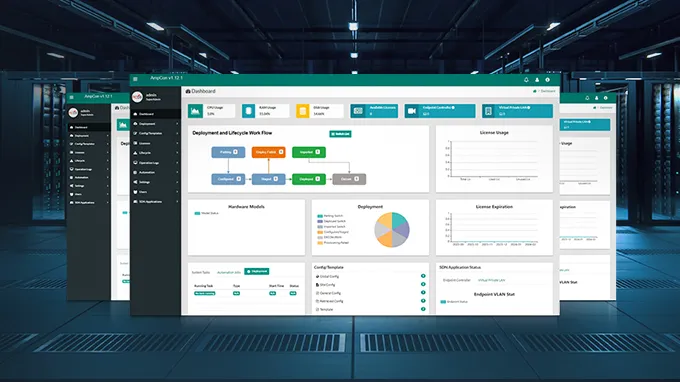Comprehensive Guide for Fiber Cassettes
Fiber optic cassette is a key component in modern fiber optic networks. It is a compact, modular device used to manage and distribute fiber optic connections in a cost-effective and efficient manner. Fiber cassettes are typically used in data centers, telecommunications facilities, and other high-bandwidth networking environments. In this article, we will explore what a fiber cassette is, the different types, and the importance of fiber optic cassettes.
What Is a Fiber Cassette
The fiber cassette is a modular component of the fiber optic system designed to simplify and organize the connection and management of fiber optic cabling. It is essentially a housing unit that holds pre-terminated fiber optic cables and can be inserted into a fiber patch panel or fiber enclosure.
Fiber cassettes come in a variety of shapes and sizes, but they generally consist of rectangular or square metal or plastic housing with a front panel that can be removed or pivoted open. Inside the housing, the pre-terminated fiber optic cables are organized and secured by a cable management system, which helps protect the delicate fiber optic connectors and cables from damage.
The fiber cassette's front panel typically includes ports or fiber optical adapters for the fiber optic cables to connect to, enabling easy connection to other fiber optic components, such as fiber patch panels, switches, or routers.
Types of Fiber Cassettes
There are several types of fiber cassettes available on the market, each designed for specific applications and environments. Let's explore the most common types of FS fiber cassettes:
MTP®-LC/SC/MDC Cassettes: MTP® fiber cassettes offer 8/12/24-fiber MTP® adapter on the rear of the units routed to LC/SC/MDC adapters on the front patch field for quick and easy deployment in high-density applications and provide efficient utilization of rack space and design flexibility. The cassettes interconnect with high-density fiber cable assemblies for quick remote or data center application connection.

MTP® Conversion Cassettes: MTP® conversion cassettes have 12/24-fiber MTP® adapters in the rear for mating to backbone trunks and breakout to 8-fiber MTP adapters in the front for connectivity to electronics. These conversion cassettes fully utilize all fibers in each Base-12/24 set in the trunk by breaking out Base-12/24 MTP adapters at the rear of the module into a proportionate number of Base-8 MTP adapters at the front.

MTP® Mesh Cassettes: MTP® mesh cassettes feature eight rear 8-fiber MTP® ports connection and eight 8-fiber MTP® ports in front. The MTP®-8 mesh cassette is ideal for deployments including 40G to 10G, 100G to 25G and 400G to 100G. Providing future-proof Ethernet and fiber channel networks at continuously rising transmission speeds in data centers makes mesh cassettes almost indispensable for the required high-performance fully meshed network infrastructures in modern data centers.

LC Splice Cassettes: LC splice cassettes can house and protect fiber optic splices, guarantee proper fiber cable management and bend radius control, allow for clear labeling and logical organization of the fiber optic splices, and hold and protect up to 24 fusion splices. Splice cassettes eliminate the need for individual splice trays within FHD® series rack mount fiber enclosures and provide optimal organization and slack management of fibers. Typical applications include Wide Area Networks (WAN), campuses, government installations, data centers, and central offices.

TAP Cassettes: Traffic Access Point (TAP) cassette is a passive monitoring device that passes traffic from the live network to the monitoring devices and provides a demarcation between the live network and monitoring infrastructure. It is designed for use to effectively monitor network traffic whilst optimising performance, are tools that provide users with an understanding of network flow patterns by splitting traffic for monitoring and security without interrupting network traffic.

Importance of Fiber Cassettes
Fiber cassettes are an essential component in fiber optic networks as they play a significant role in securing and organizing fiber optic cables.
-
Protection and Organization of Fiber Optic Cables: Fiber optic cassettes provide protective housing for delicate fiber optic cables and help keep them well-organized. They keep fiber optic cables from becoming tangled or damaged, ensuring the uninterrupted transmission of data.
-
Easy Installation: Fiber cassettes are simple to install, and they are available in a range of sizes to accommodate different fiber counts. They can be inserted into panels or rack mounts without the need for specialized installation tools.
-
Flexibility: Fiber cassettes are typically available with different connector types LC, SC, or MTP/MPO, allowing for a variety of different connection types to be used in the same cassette. This flexibility makes it possible to upgrade the network with the existing infrastructure cabling, saving a lot of costs.
-
Cost-effective: Fiber optic cassettes feature a compact, modular design, allowing them to be easily replaced or upgraded as needed without replacing the entire network infrastructure, which reduces material and installation costs. This makes fiber cassettes an ideal choice for companies that need to maintain a high level of network performance while keeping costs under control.
How Fiber Cassettes Are Used
Fiber cassettes are typically used in conjunction with other fiber optic components to create a complete fiber optic network. They are typically installed in a network rack or cabinet and are connected to other components in the network, such as switches or routers.
When used in the data center environment, fiber cassettes are often used to connect servers and storage devices to the network. They are also used to connect different parts of the data center, providing a high-speed and reliable network connection.
In a telecommunications network, fiber cassettes are used to connect different parts of the network, such as cell towers, switches, and data centers. They are also used to provide high-speed connections to businesses and residences.
In an enterprise network, fiber cassettes are typically used to connect different departments and offices. They can also be used to connect remote workers to the network, providing a secure and reliable connection.
Conclusion
In conclusion, fiber cassettes are an essential component in the world of fiber optic communication. They provide a centralized location for managing fiber optic cables, improving network performance and scalability. Fiber cassettes are easy to install and use and can be used in a variety of network environments, including data centers, telecommunications networks, and enterprise networks. By providing a clean and organized way to manage fiber optic cables, fiber cassettes help to reduce clutter and make it easier to identify and troubleshoot any issues that may arise.
You might be interested in
Email Address

-
PoE vs PoE+ vs PoE++ Switch: How to Choose?
May 30, 2024












